A complete western Bhutan experience, this trip will take you right from Paro to Phobjikha valley. This tour is designed to give our guests an experience of our unique culture and traditions. One gets to experience great accommodation and foods at our partner hotels and resorts. This tour will give our guests an insight into the rural live of Bhutan, where subsistence farming is still practiced.
The highlight of this tour apart from the TIGER NEST HIKE in Paro is the visit to the BIGGEST BUDDHA STATUE in the capital city Thimphu is the visit to the PUNAKHA DZONG which is majestically located at the confluence of two rivers and the LARGEST PRIVATE MONASTERY in Phobjikha at 2900 meters above sea level.
Welcome to the land of the thunder Dragon. We invite you to experience the beauty, culture and spirituality of Bhutan with us. We wish you a beautiful journey thru our kingdom.
Day 1: Arrive at Paro International Airport – Transfer to Thimphu.
Distance: 54 km
Driving time: 1hr 20mins drive.
Altitude in Thimphu: 2400 m / 7874 ft above sea level.
Our pilgrimage begins with a journey towards east into the booming metropolis of Thimphu. Situated at an altitude of 2400 m it is home to 140,000 Bhutanese. Thimphu being the capital of Bhutan, offers unique opportunities to explore the Bhutanese culture, lifestyle and traditions in depth.
We invite you to see the sights of the Kingdom’s capital with us. Below we have listed some of the experiences that we enjoy the most.
Roughly 30-minute drive from the airport towards Thimphu we will stop to have a view of Tachogang Monastery. The temple of excellent horse built by Thangthong Gyalpo (Iron chain builder in Bhutan) in 15th century. Down by the river we can see one of his Iron Bridge. You can take a walk and cross the suspension bridge built just next to the Iron bridge to have a closer look.
Once we arrive Thimphu, we will spend our time circumambulating the sacred National Memorial Chorten. This is a Tibetan-style chorten built in 1974 in memory of the late King Jigme Dorji Wangchuk who passed away in 1972. It is one of the most visible religious structures in town and for many people it is the focus of daily worship. Remember to walk around the Chorten at least once to gain merit and good luck.
Next, we will drive up a ridge to visit the Biggest Buddha Statue at Kunesel Phodrang in Thimphu. This statue of Buddha measures 52 meters. It is one of the largest statues in the world. The statue is made of bronze and is gilded in gold. There are many smaller Buddha statues placed inside.
We will also browse the striking collection of intricate textiles at the National Textile museum.
The Museum introduces you to the living national art of weaving. The exhibition displays the major weaving techniques and styles of local dress and textile made by the Bhutanese women and men.
Next, we will take in more of kingdom’s rich culture at the Folk Heritage Museum. The museum is a restored three story traditional rammed mud and timber house inaugurated as a museum by Her Majesty the Queen Ashi Dorji Wangmo Wangchuk in 2001. It showcases the traditional artifacts used now and, in the past, which helps connect people to the Bhutanese rural life.
Typical Bhutanese Lunch at the Museum restaurant.
Next, we will stretch by hiking to the ancient Wangditse Goemba. It is an easy hike thru pine forest and with good overview of King Jigme’s palace. (2 hrs. hike) Wangditse Goemba was founded in 1750 by the attendants of Bhutan’s 8th desi, Yeshey Rabgye. It was renovated in 2002 after it suffered serious damage in a windstorm in 1995. The monastery is further undergoing major renovation after it was destroyed by the earthquake in 2011.
On our way back, we will stop to visit the Mini Zoo. The zoo used to exhibit various indigenous wild animals, which were later released back into the wild by order of the 4th King who declared that such a facility was not in keeping with the Bhutan’s environmental and religious convictions. The zoo now only features the Takin, which is the national animal of Bhutan. The Takins were originally released with the rest of the animals, but had become so familiar with people that they were found wandering around Thimphu looking for food. The only solution was to put them back into captivity.
Overnight in Thimphu.
Day 2: Thimphu.
Doderak monastery:
Time: 4 – 5 hours.
Difficulty level – Moderate.
The hike to Dodedrak involves yet another struggles up the mountainside, but few hikes are as rewarding as this one in terms of scenic beauty and insights to Buddhist architecture, craftsmanship and mysticism.
After entering Royal property close to the 4th King’s Palace and walking the first ten minutes on paved road, the trail sets off steeply up the mountainside for about 1 – 1 ½ hour. As you move upwards, Thimphu town reveals itself, and you will have great views of Wangditse and Dechen Phodrag temples. The last part of the walk takes you along the hillside overlooking Thimphu on your left, past a huge rock used as a study spot for the monks, and to a chorten. Awaiting around the corner, is the sight of a beautifully situated, magical monk village established around the mysterious 12th century temple, Dodedrak. Walk through the parish among the young monks until reaching the first of the three temples. Very often, you will see white languor monkeys playing in the trees below. The courtyard area outside the temples has great picnic spot. Take plenty of time to let the mystery reveal itself before returning to the real world.
When you are ready to leave this magical place behind, set off on the same trail that led you here until you again reach the chorten. From here, follow the upper trail which will lead you gently down towards Dechhencholing Goemba and the Queen Mother’s Palace.
Dodedrak village arose around a temple prophesized by the Chief Abbot Yonten Thaye, the reincarnation of Channa Dorji (The God of Power and Energy), when he was working as a teacher in Phadjodhing in the 12th century. After his vision, he later came to build the temple in the face of a huge rock split in two.
The two altar rooms are equally interesting; both with red carpeted floors and with original 900-year old paintings. As you walk up to the altar rooms on the 1st floor, the view of the temple’s protective deity, Dorji Pelpa, outlined in the stone wall is awesome. This imprinted sketch is believed to be self-created. The roof of the first temple is filled with remarkable mandalas.
There are two rock wall paintings at the entrance area of the temples. The extraordinary shapes of the stone walls are believed to be natural, and with help of colors, the first painted wall tells the history of Dodedrak. The second painted wall is the vision of Dodedrak and depicts what the area looks like today.
You can also see the Paradise of Guru Rinpoche. The second altar room has statues of four chief abbots, where the abbot Jamyang Gyeltshen is believed to have created all the other statues the temple holds as well as the paintings. It is said that when he died, one could observe tears falling from the eyes of the statues and the gods depicted in the paintings.
In the 1980s, the 4th King initiated the development of a lobdra (monastic school) and a shedra (Buddhist college) in the Dodedrak area which now consists of numerous small houses scattered in the hillside among three lhakhangs and a stupa which is believed to bring peace and harmony to the community. 154 monks aged 15-28 now inhabit the village. A three-hour hike above the village is a 1000-year old meditation retreat inhabited by hermits who have meditated here for as long as 12 years.
Overnight in Thimphu.
Day 3: Transfer to Phobjikha valley.
Distance: 134 km
Driving time: 5 hrs 30 mins drive.
Altitude in Phobjikha: 2900 m / 9514 ft above sea level.
Phobjikha Valley is one of the most stunning areas in the country. The wide flat valley without any trees after the hard climb through dense forest is an extremely rare experience in Bhutan. In contrast to some parts of Bhutan, where modern development is already very apparent, Phobjikha is a place with natural beauty.
Before driving through the fir, juniper and rhododendron into the glacier valley of Phobjikha, after roughly 40 minutes’ drive, we will stop to stretch by hiking to Hongtso Goemba (1 hr hike). The Goemba was built in 1525 by Drukpa Kuenlay (the Divine mad man). It is a two-story traditional Bhutanese building where the main alter room has an enormous statue of Guru Tshoki Dorji in a standing posture together with his spiritual consort. Inside we can view very old wall paintings.
10 mins drive after the end of hike we will reach Dochula Pass (3000 meters). If weather permits, we will have great views of the extended eastern Himalayas in Bhutan.
From there we will continue our journey by winding our way into Wangdi valley (1300 meters) and then drive up until the neck of Pelela pass (3300 meters) where we will cut our way to take a diversion into the glacier valley filled with dwarf bamboos. The valley is one of the most important wildlife preserve in the country, because of the large flock of black necked cranes that migrates from Tibet in the winter.
There, we will briefly visit the famous 16th century Gangtey Goemba that overlooks the large green expanse of the valley. The monastery is surrounded by a large village inhabited mainly be the families of the Gomchens (lay monk) who take care of the monastery.
Next, we will visit the Crane education center. There we can watch the short documentary on the magnificent black necked crane and also look out for the cranes in the valley with the help of a binocular there.
Overnight in Phobjikha valley.
Day 4: Transfer to Punakha.
Distance: 87 km
Driving time: 3 hrs drive.
Altitude in Punakha: 1300 m / 4264 ft above sea level.
The sub-tropical valleys of Punakha and the surrounding mountain sides offer a large variety of attractive places to explore and discover monasteries and the most impressive Dzong in the country.
After two hours of descend we will arrive Wangdiphodrang valley. There we will visit the Wangdiphodrang Dzong which was burnt down by fire in 2012.
We will hike to the famous Chimi Lhakhang (Fertility temple). 1 hr hike. The 30-minute walk from the road to the lhakhang is through open farmland and rice paddies. It is believed that a demoness who had been terrorizing the valley transformed herself into a black dog to escape the wrath of Drukpa Kuenlay, the Divine Madman. However, he caught the dog and buried it under a pile of earth shaped like a woman’s breast. He then built a chorten on top of this mount and prophesied that a temple would one day be consecrated over it. True to the prophecy, his brother, Lam Ngawang Chogyal, built Chime Lhakhang in 1456. If you are wishing for a child, it is believed by the Bhutanese that a visit to the Divine Madman’s temple, Chime Lhakhang, might help increase your chances! Thousands of people visit this temple on pilgrimage and numerous couples visit the lhakhang to pray to become pregnant and receive a wang (blessing) from the saint with the magic thunderbolt of wisdom. Many parents also bring their newborn children to receive the baby’s name from the local lama.
After Picnic lunch by the riverside we will drive down valley to visit the stunning Punakha Dzong. The Dzong is considered one of the most important and also one of the most beautiful Dzongs in the Kingdom. It was built by Zhabdrung in 1637, and was the seat of the government every winter until Thimphu was established as the permanent capital in 1955. It is still the winter residence of the Central Monastic Body.
Next, we will travel up the valley north and cross the Mo Chhu to hike up and pay respect to the grand Khamsum Yuelley Namgyal Chorten, The Chorten is 30 meters (100 feet) tall and can be seen in the distance when driving or walking up from the footbridge towards the lodge. The three-leveled chorten took eight and a half years to build and was consecrated in 1999. Dedicated to the Fifth King, it was built to remove negative forces and to provide peace, stability, and harmony in an ever- changing world. It is therefore filled with every form of colorful protector imaginable.
Overnight in Punakha.
Day 5: Punakha.
Jungle Hike to Hokatsho – Bhutan’s Largest Lake
Time: Total 6 – 7 hours hike.
Note that due to dense vegetation, mud and leeches, this hike is not recommendable during summer. Difficulty level – Strenuous.
This beautiful untouched lake is hidden away in the middle of dense jungle vegetation. Those who venture on this journey are up for an exciting meeting with overwhelming beautiful nature up close.
The hike starts on a red mud path sloping uphill through small villages before reaching the 15th century temple Chorten Nyeabu (described above). From here, the path follows a man-made creek all the way to the lake. As you proceed upwards, the vegetation gets denser. The mesmerizing sounds created by the many interesting insects are impressively loud and sedative. When reaching the lake, a small path leads down to the water for some magnificent views of Hokatsho in its peaceful and untouched surroundings. Take a few minutes to take in the beauty of the setting before continuing down again on an alternative path which is not as steep. (Should you wish to walk around the lake, this takes about two hours.) When reaching the village nearby Chorten Nyeabu, we can arrange for you to have your picnic lunch in one of the charming farmhouses scattered on the hillside overlooking the valley. Here you can enjoy the gorgeous views from the family room whilst sipping some ngaja with the locals, before commencing on the last hour down to the pickup point.
Overnight in Punakha.
Day 6: Transfer to Paro
Distance: 125 km
Driving time: 4 hrs drive.
Altitude in Paro: 2300 m / 7544 ft above sea level.
The journey west takes us back to Paro valley crossing the Dochula Mountain Pass, side stepping Thimphu city and following wang Chhu river and and Pa Chhu rivers before arriving in Paro.
At Dochula pass we will take the hike.
Dochula – Lungchutse – Tashigang Goemba Hike.
Time: 4-5 hours
Difficulty level – Moderate.
One of the most rejuvenating and picturesque hikes during your kora journey is the Dochula to Lungchutse and Trashigang Goemba, not only the hike itself is beautiful, but the 360° view from Lungchutse temple is one of the best you will get of the Himalayan mountain range.
You will start your hike from the large chorten in the middle of Dochula, the pass between Thimphu and Punakha at 10,300 ft / 3,140 m above sea level. From here the trail slowly climbs a ridge through a forest of hemlock, birch and rhododendrons until reaching an open meadow. Again, you will enter into forest of moss-covered rhododendrons, gigantic hemlocks, junipers, and bamboo undergrowth. A small trail leads you the last 160 ft / 50 meters past a row of fluttering prayer flags up to Lungchutse temple.
On clear days, the view from the temple is fantastic! You will have a 360° view of the Himalayas including views of Jumolhari (24,000 ft / 7,314 m), Masang Gang in the region of Laya (23,500 ft / 7,158 m), Zongophu Gang – a Table Mountain that dominates the isolated region of Lunana (23,160 ft / 7,060 m) and Gangkhar Puensum, the highest peak in Bhutan and the highest unclimbed peak in the world (24,600 ft / 7,497 m). You can also see Gasa Dzong, as a tiny white speck in a sea of green almost 31 miles / 50 kilometres to the north.
A trail to the left just 490 ft / 150 m below Lungchutse, leads to Trashigang village and temple. It slowly descends through spruce, rhododendron, hemlock and juniper forest. The village’s many dogs will warn the villagers about your arrival as you walk through the settlement down to the temple. It is nice to have lunch around the chorten in the temple’s courtyard while watching the monks in their daily endeavors.
The trail leading down from the front of the temple zigzags quite steeply down the side of the mountain until reaching a farm road which takes you up to the main road. Unless you have had enough hiking for one day, you might also want to visit Hongtsho village temple on the hill side to the right on the opposite side of the road. This involves a 30 – 60-minute short hike up through the little village and back down again the same way.
Trashigang Goemba was built in 1786 by the 12th Je Khenpo. It is an important mediation center, and houses statues of several Je Khenpos who meditated here.
After the hike we will continue our journey to Paro.
Overnight in Paro.
Day 7: Paro.
Today’s exploration of Paro valley begins with an early hike to Taktsang Goemba (Tiger’s Nest monastery) 4-5 hrs. hike.
The monastery is one of Bhutan’s most revered monuments. It literally hangs off the face of a cliff 900 meters above the valley floor. The legend states that Guru Rinpoche flew into Paro valley on a mythical tigress and meditated in a cave where Taktsang stands today. The Taktshang Goempa is built around the cave. The hike offers spectacular views of the Goempa and the valley below. Horses or mules can be arranged on request to help lighten the journey.
Lunch at Farm House followed by Traditional Hot stone Bath which will help easy your muscle pain from the climb.
Next, visit the auspicious Kyichu Monastery. The seventh century monastery is one of the oldest and most sacred temples in the Kingdom. The Tibetan King, Songsten Gampo ordered the establishment of monasteries in the Himalayan region to subdue evil spirits and to spread Buddhism. Of the 108 monasteries two were built in Bhutan namely the Kyichu Lhakhang and the Jampa Lhakhang in Bumthang.
The hike to the famous Taktsang Goemba and the visit to the oldest temple of Bhutan is a great finish to this day of cultural immersion and your journey to this ancient kingdom of BHUTAN.
Overnight in Paro.
Day 8: International Departure.

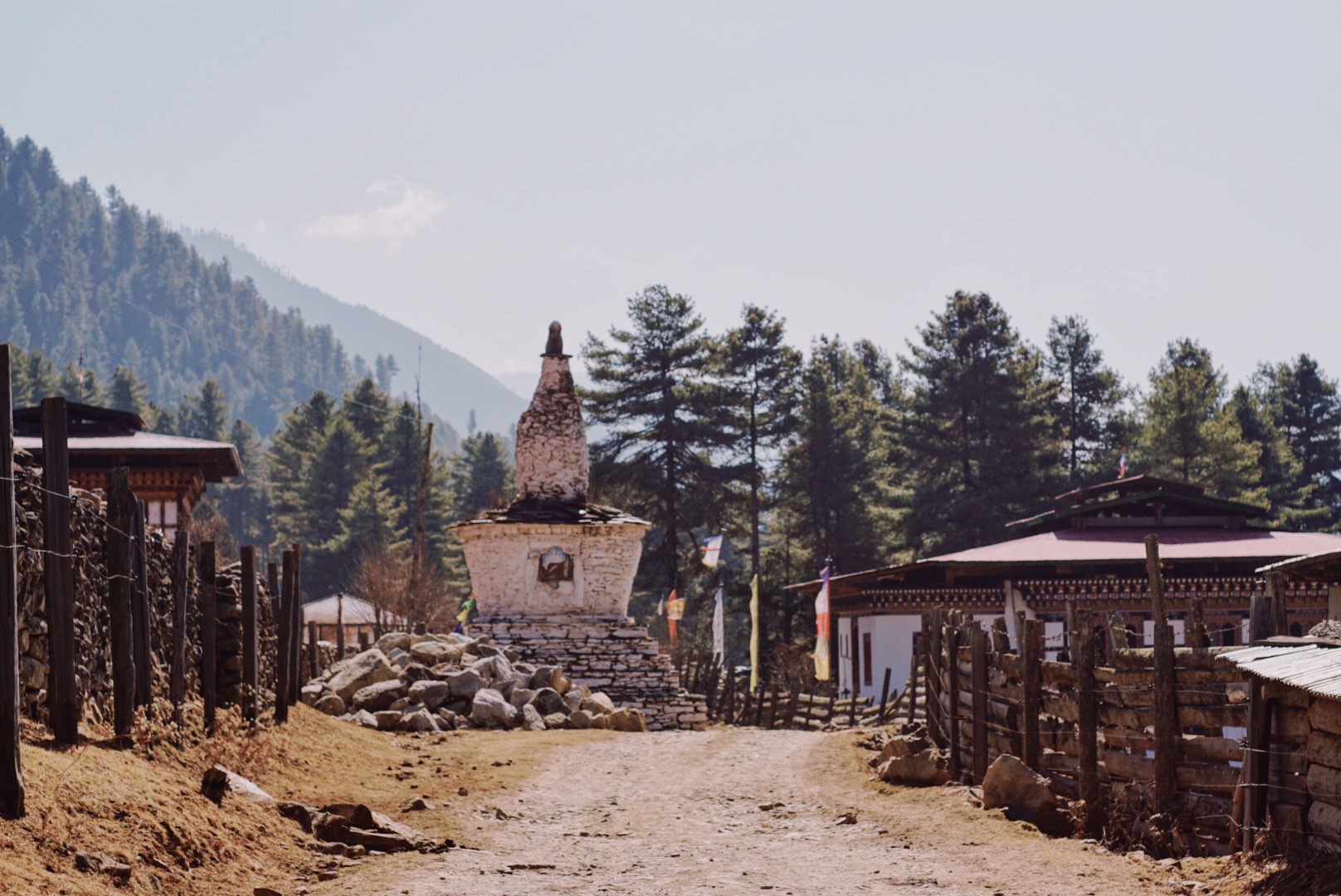
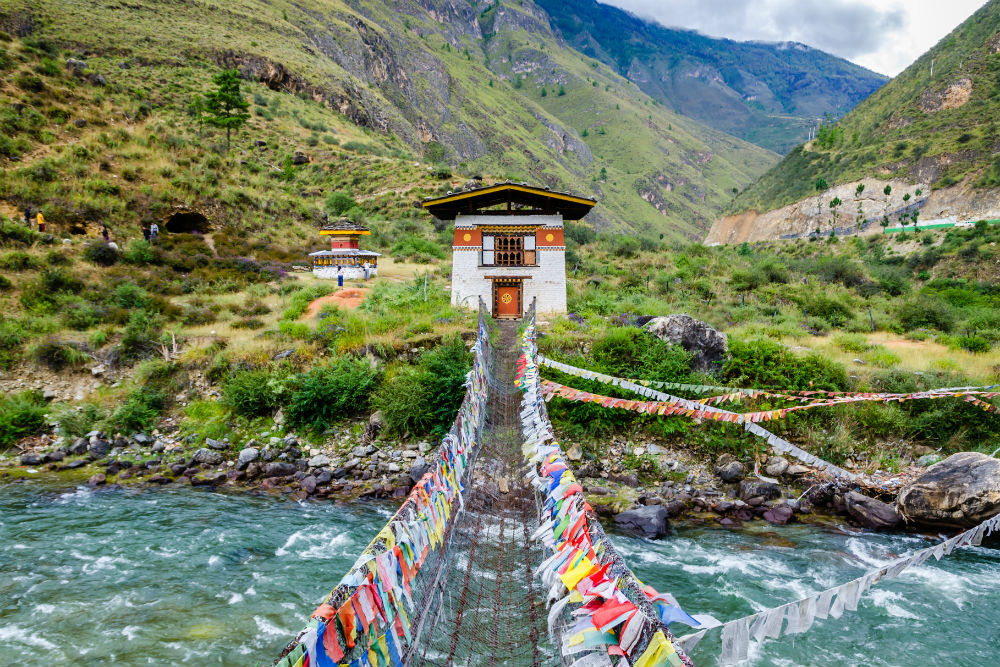
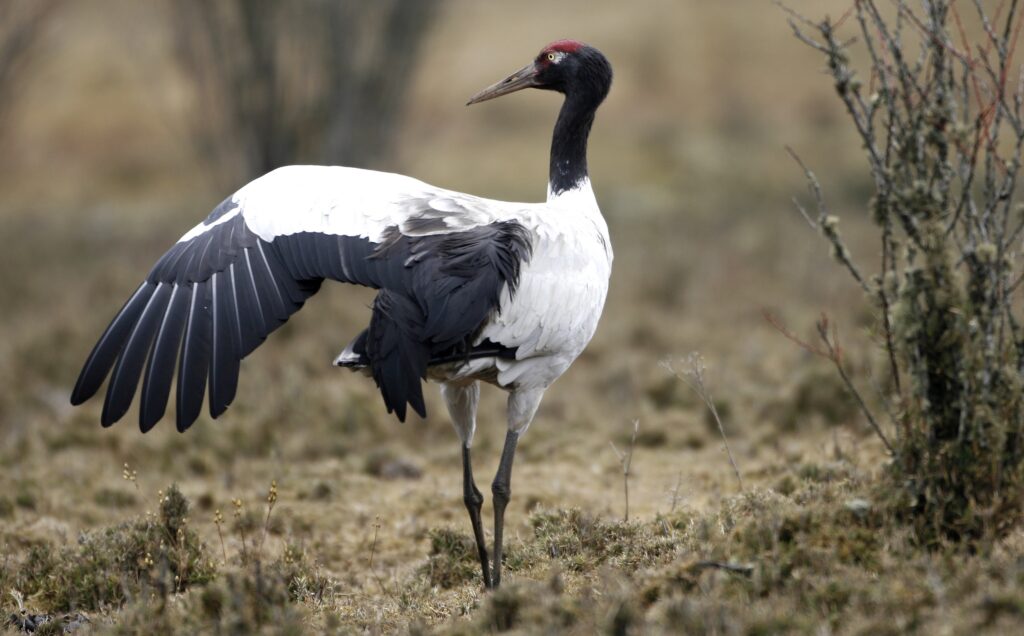
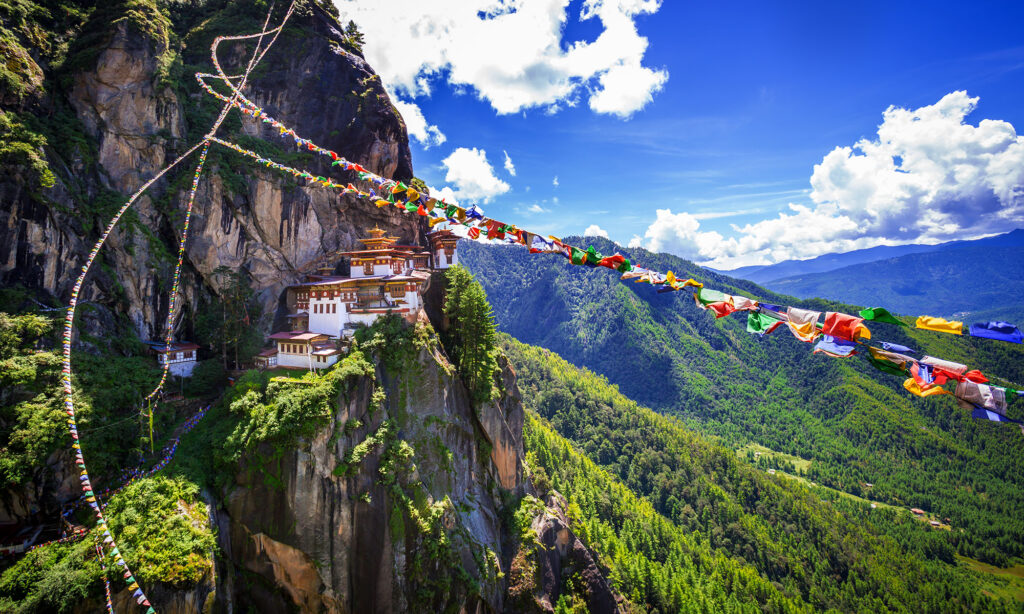
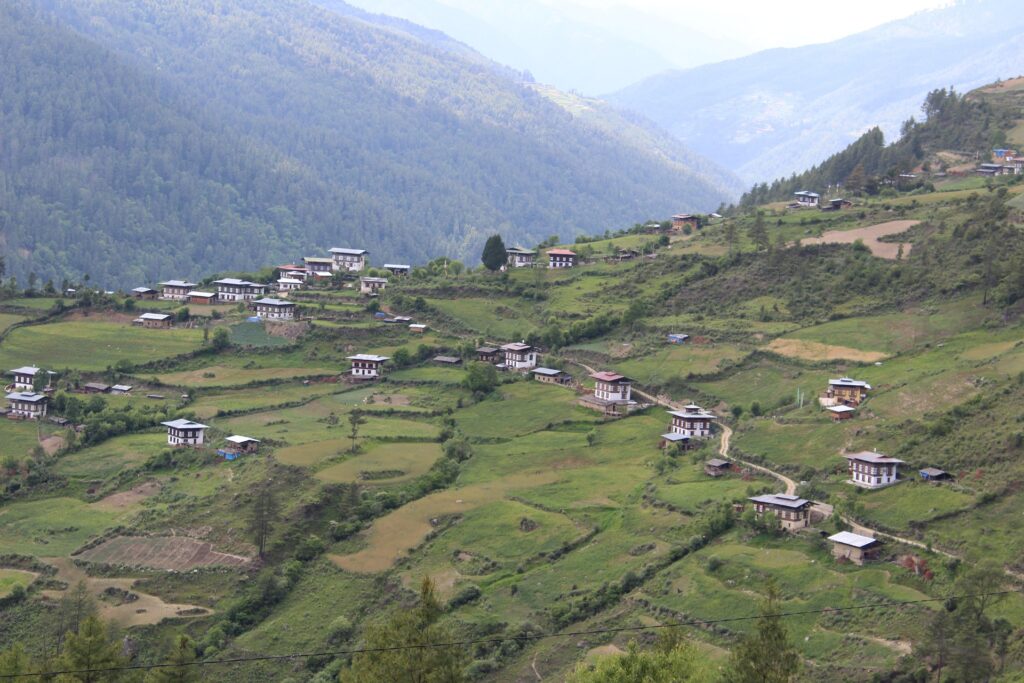
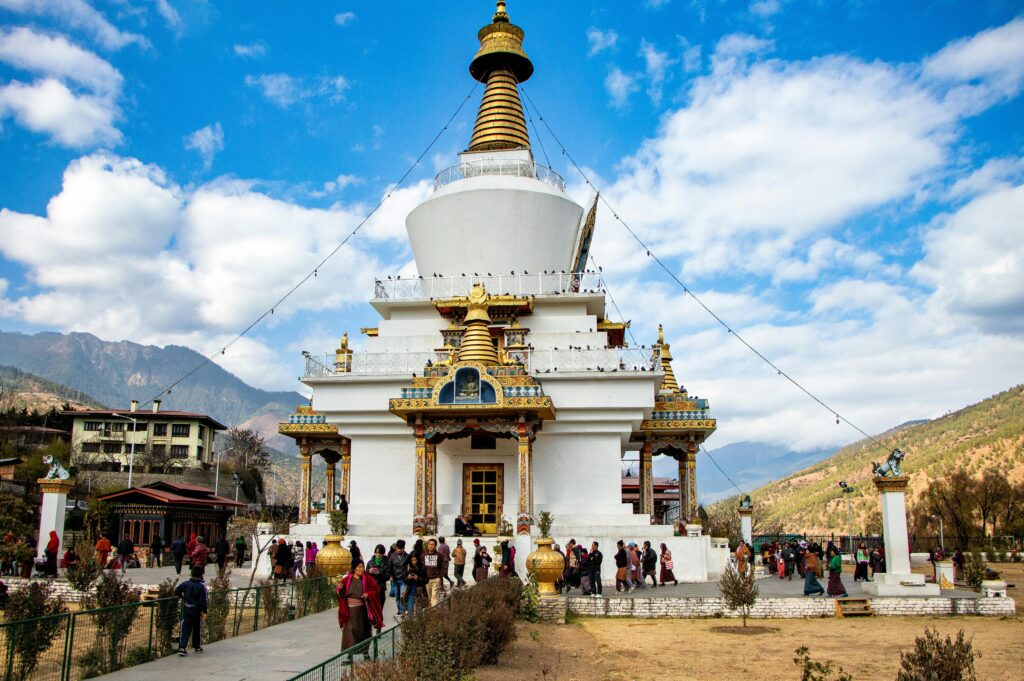
Leave a Reply
Your email is safe with us.